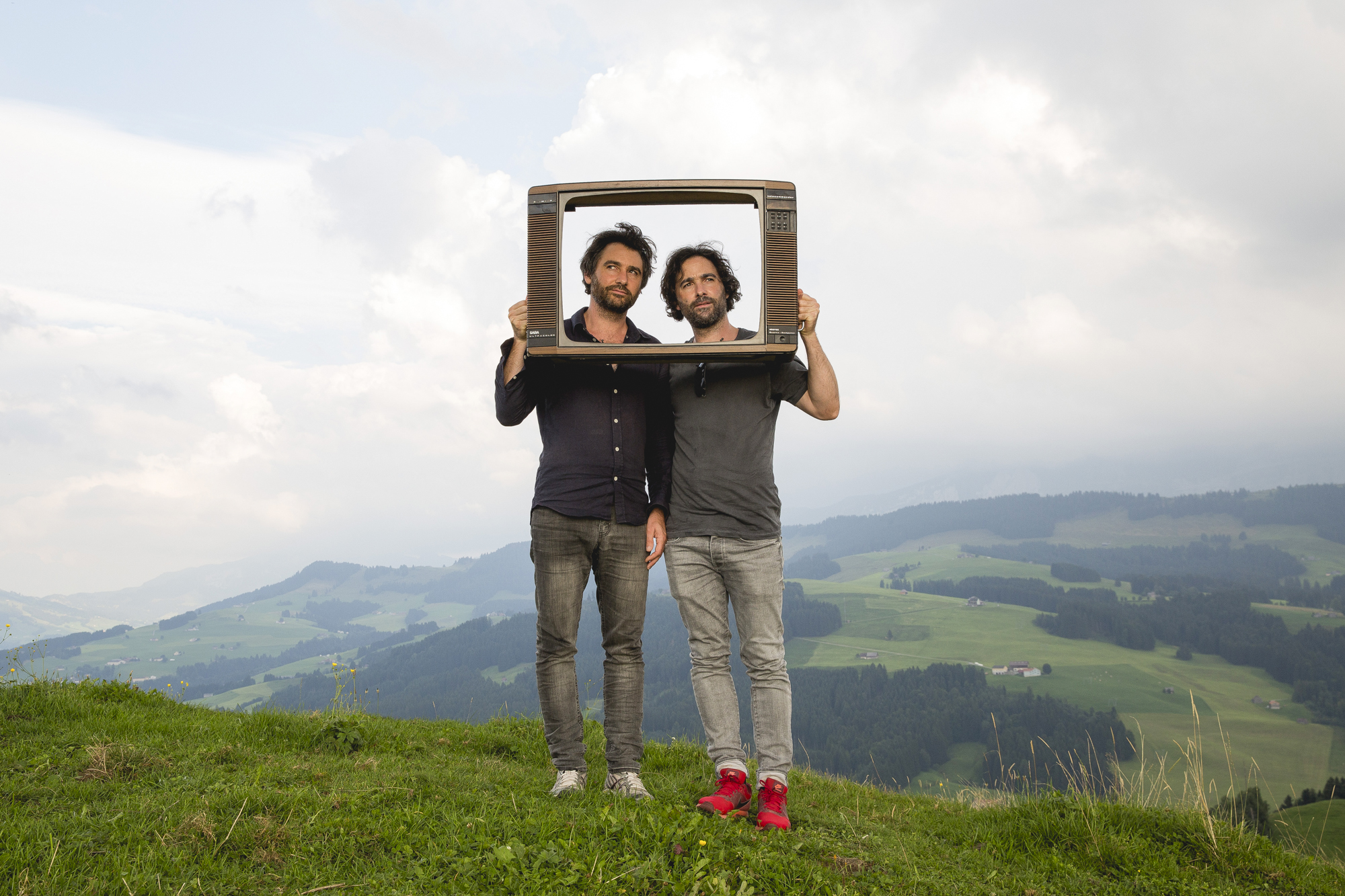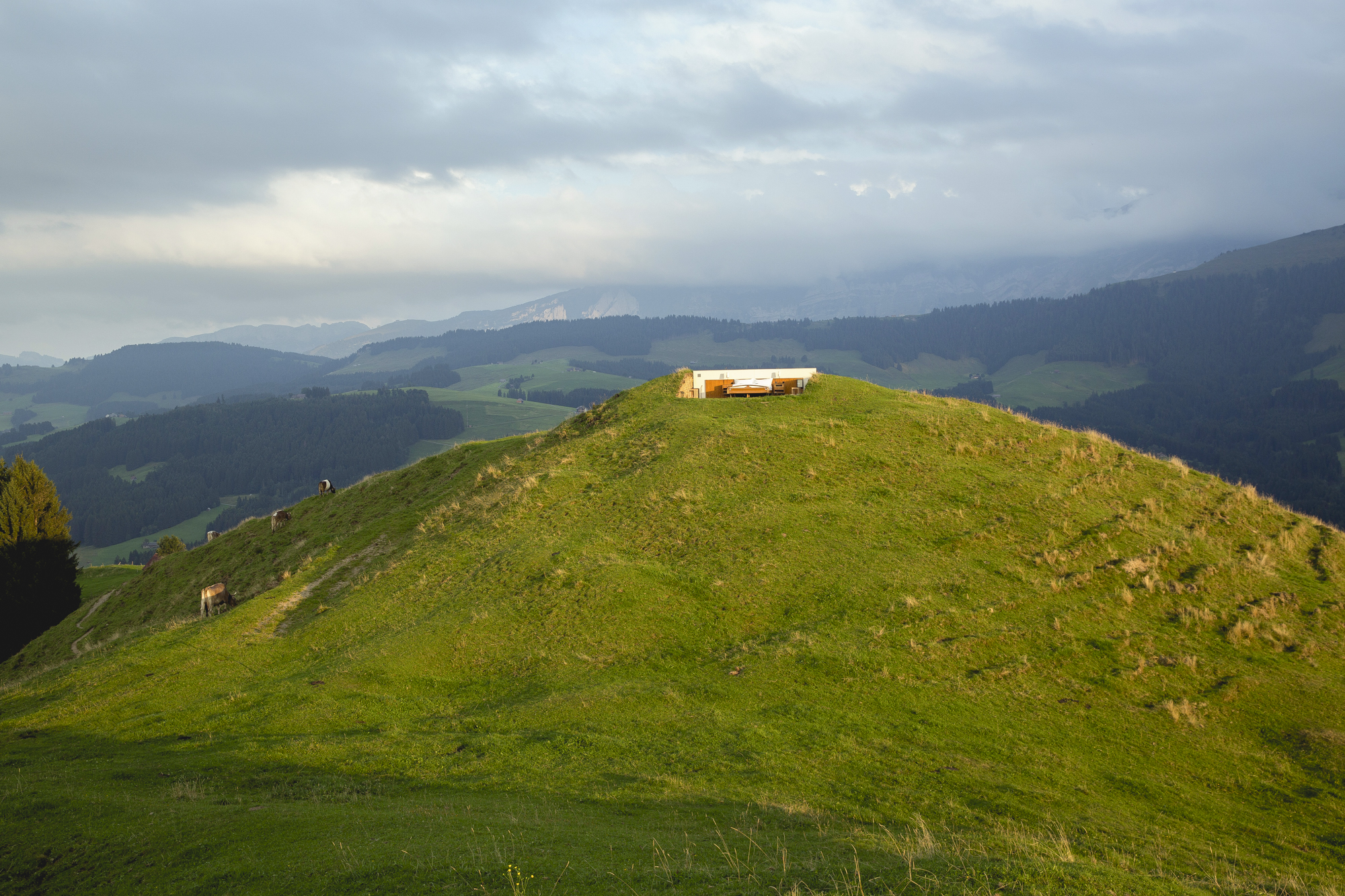
How Null Stern Hotel Transformed a Nuclear Bunker into Chic Accommodation
“Null Stern – the only star is you” is a single room hotel in the Swiss Alps that was designed without walls or a roof– on purpose (in German, Null Stern, translates to “zero star”). In 2008, the concept was born in a nuclear bunker, and in 2016, a country version was launched in Safien Valley in Grisons.
With its singular novelty and photogenic view, the concept was an immediate success. Since that time, the Null Stern Project has been recognized at the Worldwide Hospitality Awards in Paris for the Best Innovation of the Year, 2009, and in 2010, GEO magazine included “Null Stern Hotel” in their list of the 100 Best Hotels in Europe.
In 2017, “Null Stern – the only star is you” opened another installation on Göbsi summit in Gonten, Switzerland, which was met with equally rave reviews. The new development left us curious about what, exactly, goes into designing a ‘Zero Star’ hotel in the wild. Below, we talk with conceptual artists and brothers Frank and Patrik Riklin about how the concept came to be, and the enduring appeal that keeps people coming back.
GC: What’s the origin story of Null Stern Hotel?
Patrik Riklin: As conceptual artists, we want to create disruptive art through intervention in real life and in a real environment. To experience something [outdoors] is much stronger [a compulsion] than looking at a work of art in a museum.
Frank Riklin: It all started when we installed “the world’s first zero-star hotel” in a Swiss bunker 10 years ago. Actually, no one wants to be in a bunker– they have a negative connotation.
PR: Since this threatening situation is diametrically opposed to what people imagine from a hotel [by way of comfort and luxury], a field of tension is created. The circumstances can be completely reevaluated and thus questions arise about the existential framework of this specific place. For example, the typical categorization of hotels.
FR: 1500 years ago, the invention of zero, the number, changed the meaning of all other numbers. “Zero Star” flirts with the existing system, but creates a completely new category in which everything suddenly becomes possible.
PR: [Null Stern represents] the possibility to create something out of nothing.
FR: In 2016, we resumed the project because we saw an opportunity to take it to a new level. For the Land Art Exhibition “Art Safiental” (which features artwork from artists all over the world, created specifically in the landscape of Switzerland’s Safien Valley), we developed a land version in a more social context.
PR: We “bombed” the bunker by installing the hotel room without walls and without a roof in the Swiss countryside. And we made the people from the area the hoteliers.
FR: We also reinvented the concept of butler. Instead of anodyne, impersonal service providers, the guest is served by a local who shows his or her personality. He is wearing a white shirt, bow tie, and white gloves– yet he might be wearing pants that show his identity as a farmer.
PR: It is important to us to show that today, and perhaps moreso in the future, one does not have to be committed to a single identity, but can unite different lives and worlds without creating contradictions. (Thus, a hotel room without walls or a roof.)
GC: How many people are involved?
FR: After we opened the “Null Stern Hotel” 10 years ago in the bunker, it caused international media fury worldwide. Daniel Charbonnier- Managing Director of Minds in Motion SA, a hospitality services firm, contacted us to discuss the Zero Star concept and how it can push the boundaries of the hotel world. Since then, we’ve been partners and we’ve developed the brand to become what it is now, with the slogan, “Null Stern– the only star is you.”
GC: What are your goals for the future?
PR: We have no interest in exploiting the idea ruthlessly. We’ve already had offers from investors, but we rejected them because all they were interested in was the power of the brand but did not really understand the philosophy behind. We are working on the next evolution of the concept, it is too early to say more you can be sure we will do our best to surprise you!
GC: What is or was the hardest or most difficult thing about managing this project?
PR: One of the challenges is to balance the integrity of the art and the business aspect of the concept. On one side we have an enormous media coverage that generates great demand, but on the other hand we can’t grow exponentially based on business logic. Any traditional hotel would immediate open more rooms, but we are exploring other business models that are not solely based on economics of scale.
FR: It is important to us that “zero stars” is not simply understood as an overnight stay in the open air or an adventure hotel where the guest is the hero of his or her experience.
PR: In order to remain faithful to our artistic inclinations, we must develop the concept and put it in a new context, which poses new questions and creates new challenges.
GC: What advice do you have for other artists?
FR: Beware of getting bored. That can happen quickly if you only think about growing, scaling, and commercializing. The only way a project is sustainable is if you constantly ask new questions and offer new perspectives.












































